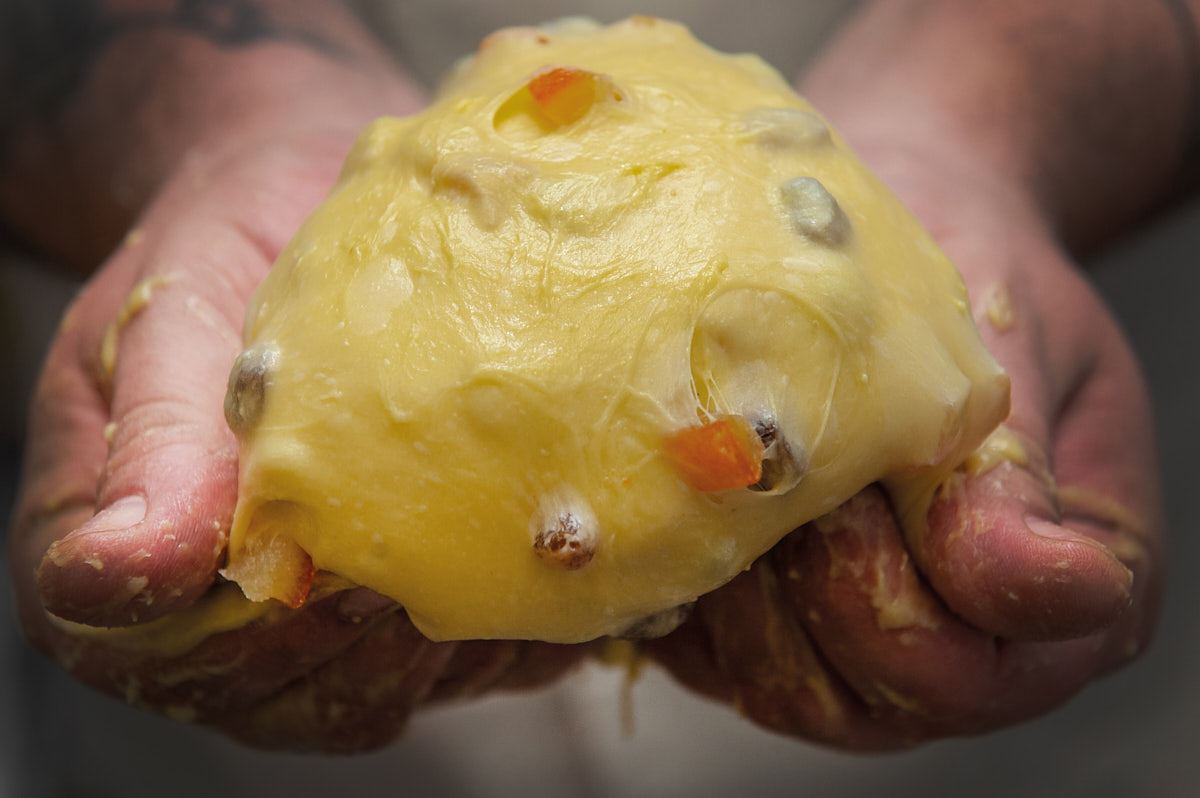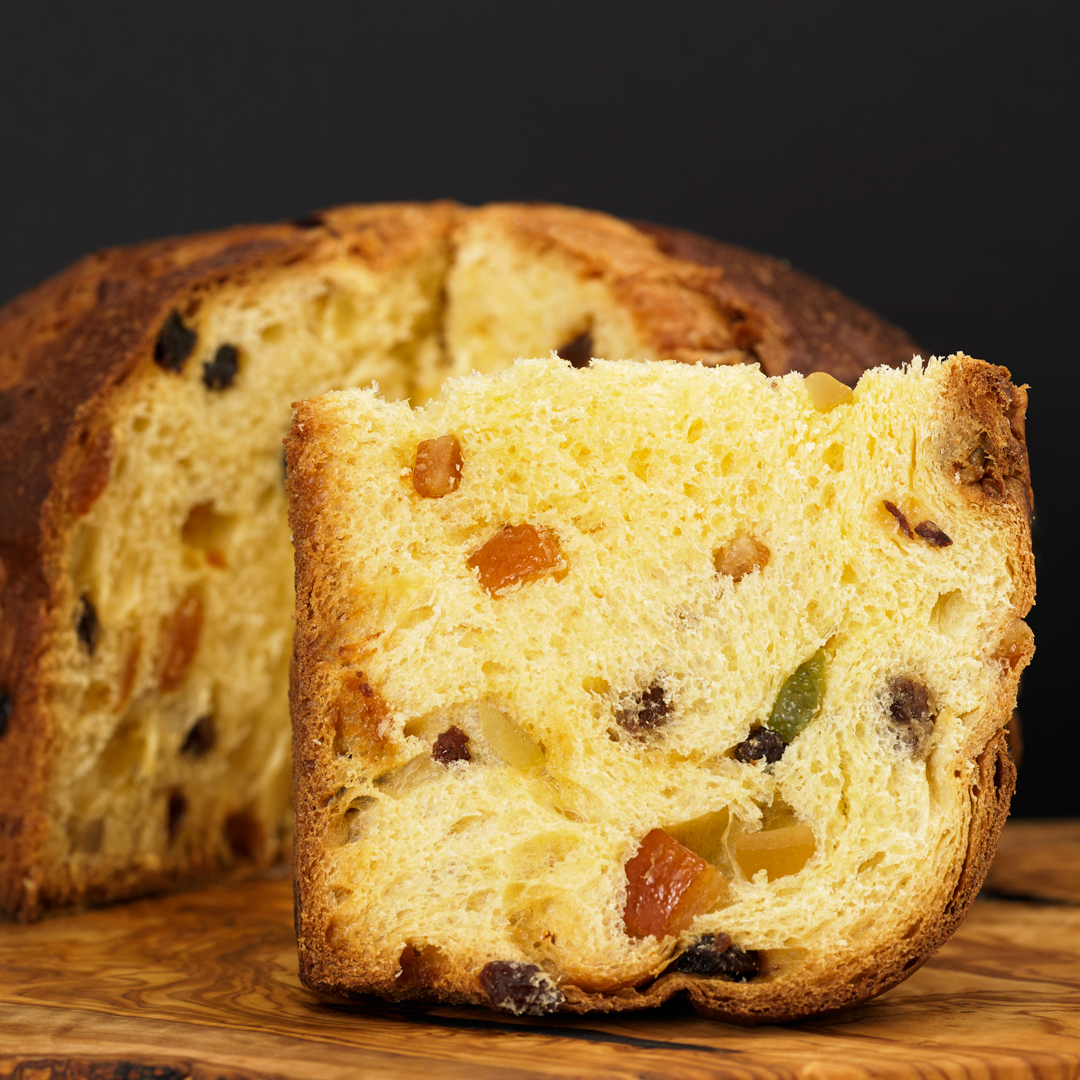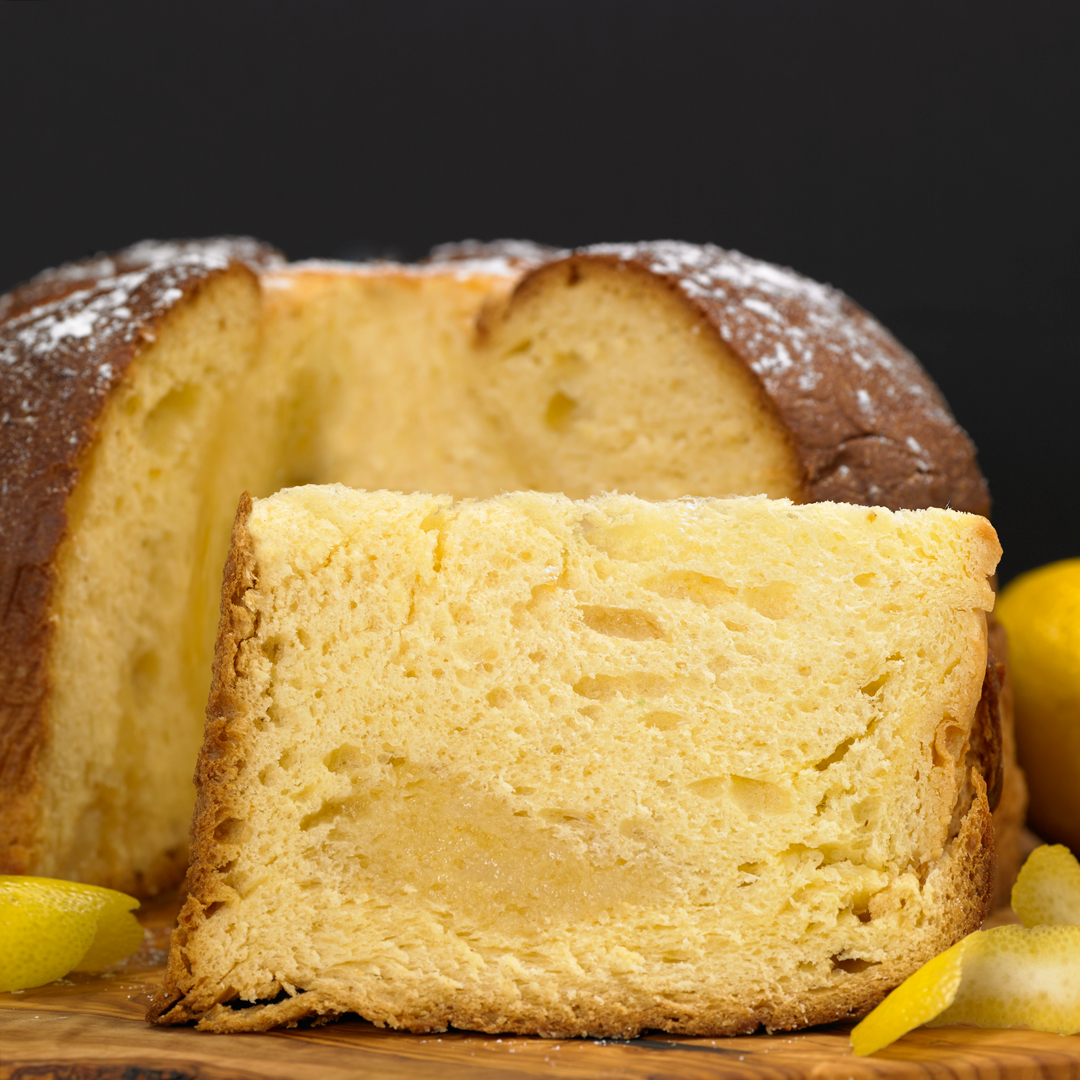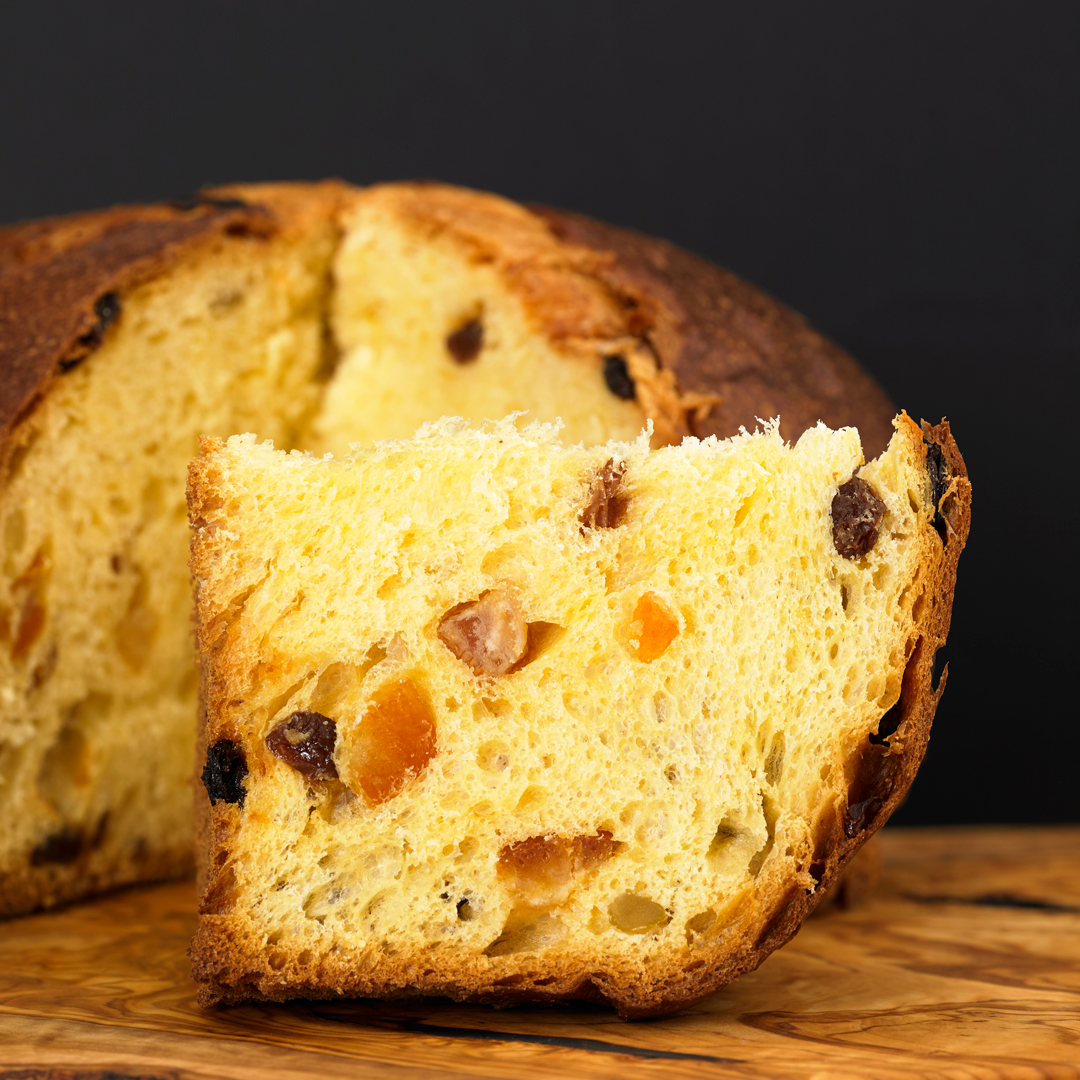It is a festive must-have in Italy that has gained its fame (and rightly so!) around the world. It’s one of our customer favourites and is back this year for the holiday season.
Panettone is the lightest of breads, a soft pillow of pure indulgence. Somewhere between a brioche and a fruit cake, this Italian sweet bread is light and airy unlike its traditional English or American fruit cake counterparts. The dome shaped Panettone we know and love today was created by Angelo Motta in the 1920s but over the years, panettone has taken many shapes, with recipes dating back to 200 A.D.
During the festive season, you will find mass produced panettone piled high on the shelves in supermarkets. These cheaper versions of ‘panettone’ will skimp on quality, using artificial colourings and flavourings to imitate the traditional cake. Most panettone available for sale in the USA are manufactured in Brazil.
Due to the rise in production in South America, there has been significant effort made to obtain a ‘Protected Designation of Origin’ status for Panettone, but so far, attempts have been unsuccessful. If you want to enjoy the authentic taste, make sure you purchase artisanal panettone that has been made in Italy.
How is Panettone made?
Making Panettone by hand, in the authentic way is notoriously difficult, requiring years of experience and intricate techniques, passed down through generations.
Central to the process is nurturing and perfecting the ‘lievito madre’, which directly translates as mother yeast. This natural raising agent gives the bread its distinct fluffy texture and slightly tangy flavours.
The flavour of panettone can vary from one bakery to the next. Not only is the flavour influenced by the ingredients and fruit used in the panettone, but also by the mother yeast itself. The microclimate of each bakery can impact the bacteria levels in the yeast, with temperature and atmosphere all playing a part.
Artisan bakers nurture their ‘lievito madre’ for decades. This temperamental natural rising agent must be monitored diligently round the clock and fed with flour and water every few hours. Bakers will wake in the night to tend to their yeast, ensuring it is kept at the perfect temperature and humidity in order for fermentation to occur.
To make the dough for the panettone, the bakers must pay attention to detail. The delicate processes and strict timings must be respected.
First, a portion of the lievito madre is carefully weighed and prepared by adding water and flour. This first ingredient of the panettone is then left to rise again overnight, until tripled in size.
Once ready, the bakers will make a start on the dough. The yeast is combined with flour, eggs, butter (or EVOO!). The addition of each ingredient is meticulously timed, and the temperatures of all ingredients must be monitored carefully to avoid the dough going into what is known as a thermal shock.
Only once the base of the dough is the perfect consistency and the gluten has the right structure, can the other ingredients be added.
The panettone is traditionally studded with candied peels. In our panettone, we use raisins, candied Sicilian orange & diamante citron peel.
You may mistake the small, green candied peels in our panettone for lime, but they are in fact the citron. This large and fragrant citrus fruit has a wide pith and unusually, the rind is sweet rather than bitter. The fruit originates from the coast of northwest Calabria and the area is often referred to as ‘Riviera of the Citron’. The citron takes its name from the small town of Diamonte, also known for its annual chilli pepper festival which takes place in the late summer.
Panettone is a labour of love.
After yet another leavening, the dough is skilfully shaped by hand to ensure that there are no air bubbles present, as this would cause the dough to collapse.
It is then placed into the pirottino, the paper casing that holds the panettone in shape. The dough is then left to proof again until tripled in size inside the casing. In its final rise, the dough begins to form a crust, which must be cut in the shape of a cross, to allow the dough to continue to rise in the oven.
The panettone is placed into the oven and baked for around one hour and once ready, the cake must be turned upside down immediately to prevent the collapse of the delicate dough. The Panettone is then hung upside down on specially made racks to allow the starches to set as the cake cools.
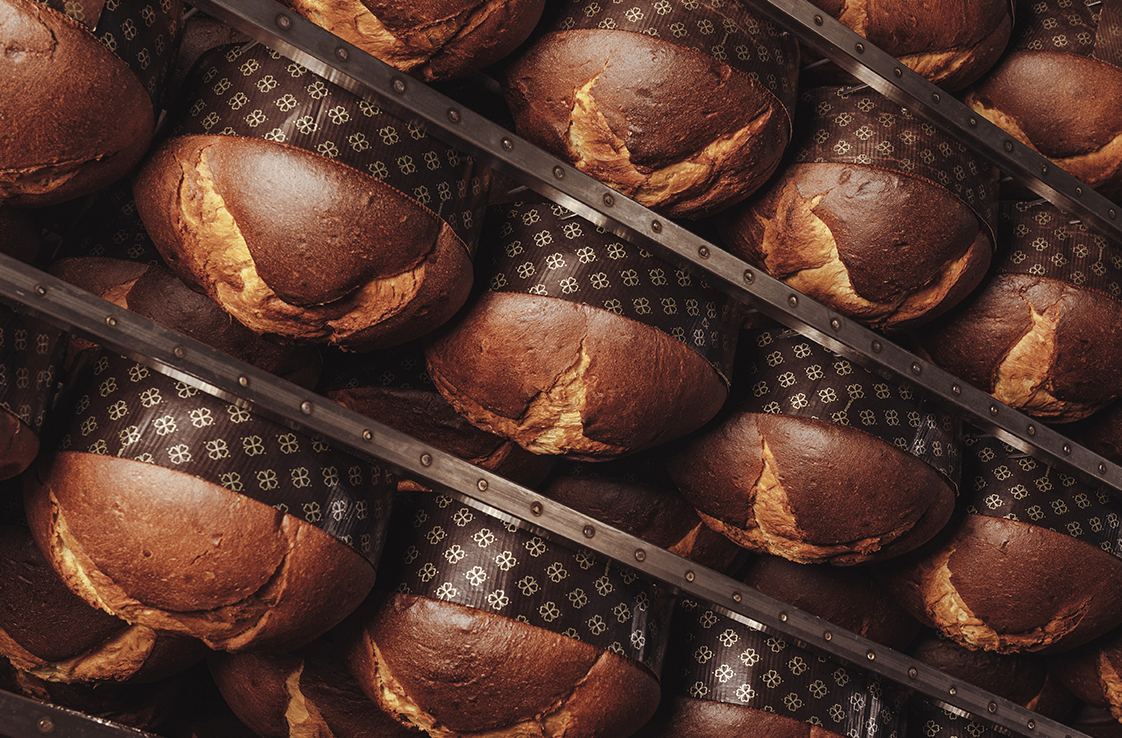
How to eat Panettone?
In our books, there is no right or wrong way to enjoy Panettone, though this may be disputed amongst the Italians.
Perfect with a cup of coffee, dunked in milk or paired with dry, sweet Marsala wine.
It can be toasted with butter, served with whipped mascarpone or cream.
Our Panettone Collection
Nestled between the cities of Venice & Verona lies a small family run Pasticceria. The skilled pastry chefs at Scarpato create each of their artisan pastries by hand, using only the finest Italian ingredients. Each of their creations is a blend of tradition, innovation and sheer indulgence. They have been nurturing their lievito madre since 1888 and you can taste the passion and craftsmanship in every bite of their fragrant panatonnee made for Nudo Adopt.

